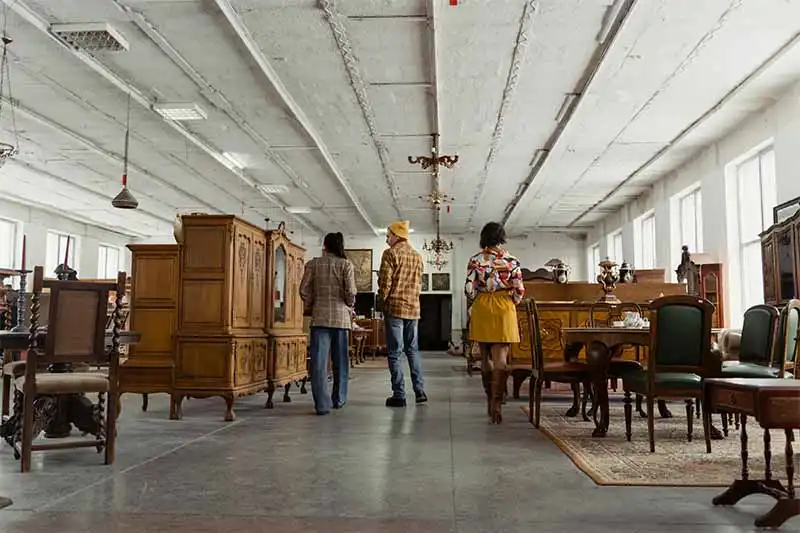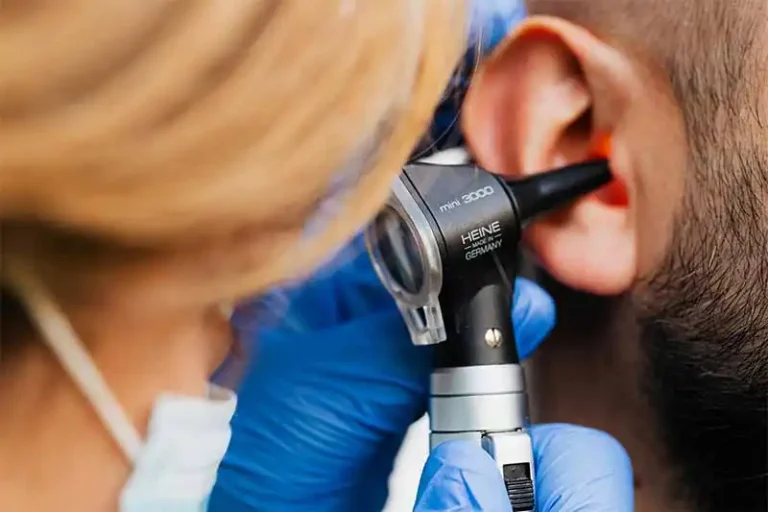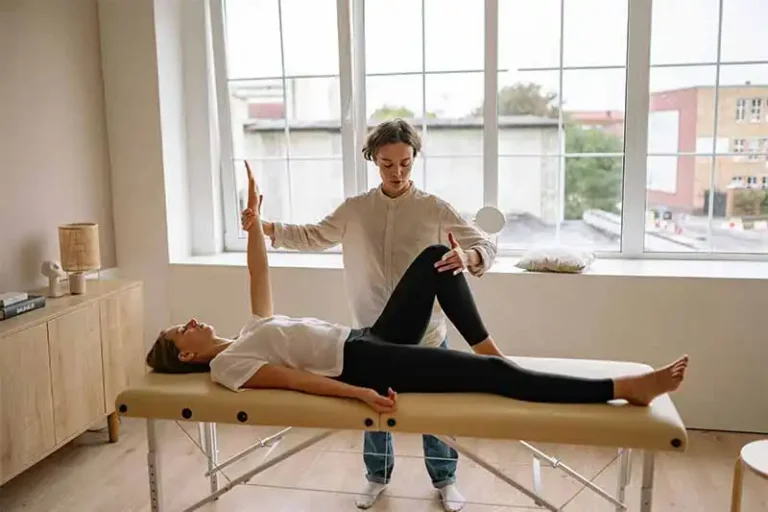Google Ads for Furniture Stores: Boost Sales & Grow Your Business
In today’s competitive retail environment, simply having a beautiful showroom or a well-stocked warehouse isn’t enough to drive consistent sales.
With more and more shoppers turning to Google to find the best deals, styles, and nearby stores, furniture retailers need a strong online presence to stay relevant.
That’s where digital marketing—specifically, Google Ads—comes into play.
Whether you’re a local furniture store aiming to increase foot traffic or a manufacturer looking to sell directly online, advertising on Google allows you to get in front of people exactly when they’re searching for products like “modern sectional sofas” or “affordable dining sets near me.”
Unlike traditional marketing methods like newspaper ads or billboards, Google Ads provides measurable results and the ability to reach high-intent customers who are actively in buying mode.
This guide is designed to help you understand exactly how to make Google Ads work for your furniture business.
We’ll walk you through every step—from defining campaign goals and finding the right keywords to setting budgets, creating compelling ads, and optimizing for conversions.
Whether you’re just starting out or looking to improve existing campaigns, you’ll get actionable insights tailored to the furniture industry.
By the end, you’ll be equipped to create profitable campaigns that drive both online and in-store furniture sales.
What is Google Ads & Why It Matters for Furniture Stores
What is Google Ads?
Google Ads is Google’s online advertising platform that allows businesses to appear in front of potential customers exactly when they’re searching for products or services.
For furniture store owners, it’s one of the most effective ways to drive targeted traffic—people actively looking to buy furniture—straight to your website or physical store.
The platform works on a pay-per-click (PPC) model, meaning you only pay when someone clicks on your ad. But it’s much more than just text ads on search results.
Google Ads includes different formats like Search Ads, which appear when users type in specific keywords; Display Ads, which show your furniture banners on websites across the internet; Shopping Ads, which showcase product images and prices directly on the search results page; and even YouTube Ads for video promotion.
One of the biggest reasons Google Ads is ideal for furniture businesses—whether you’re running a small local store or a nationwide brand—is that it’s measurable, scalable, and incredibly targeted.
You can start with a small daily budget, track every click and conversion, and adjust campaigns in real time to improve results.
It gives furniture retailers the power to reach the right people at the right time with the right message—whether you’re promoting a weekend sale, new arrivals, or clearance inventory.
How Does Google Ads Work?
At its core, Google Ads is driven by keywords—specific terms that users type into Google when they’re searching.
When someone searches for something like “modern leather sofa near me”, Google scans through all advertisers targeting that keyword and decides whose ad gets shown based on a mix of factors. This is where the auction-based system comes in.
Each advertiser sets a maximum bid they’re willing to pay for a click, but it’s not just about money.
Google also considers Ad Rank, which is determined by your bid amount, the quality score of your ad (how relevant and useful it is to the searcher), and other factors like expected click-through rate and landing page experience.
So, even if your furniture store isn’t the highest bidder, you can still win top ad positions by having well-written, relevant ads that speak directly to your ideal customers.
For example, if someone nearby searches “best reclining chair for small spaces,” and your ad features that exact product with a compelling offer and links to a dedicated product page, Google is more likely to show your ad above competitors.
This precision targeting makes Google Ads incredibly powerful for the furniture industry, where customers often search with high intent to buy.
In short, Google Ads helps you meet shoppers at the exact moment they’re looking for what you sell—whether it’s a stylish sectional, a space-saving bunk bed, or a solid wood dining table.
And with the right setup and strategy, it becomes one of the most cost-effective ways to grow your furniture business online.
Why Google Ads is a Game-Changer for Furniture Stores
If you’re running a furniture store—whether it’s a local showroom or an online retailer—you’ve probably realized that just relying on walk-ins or organic social media isn’t enough anymore.
Consumer behavior has shifted, and people now begin their buying journey online, often on Google.
This is exactly where Google Ads can make a huge difference for your furniture business.
Immediate visibility
One of the biggest advantages of Google Ads for furniture stores is how quickly you can get your brand in front of motivated shoppers.
Unlike SEO, which can take months to show results, Google Ads provides immediate visibility.
The moment your campaigns are live, your ads can start appearing at the top of search results, often within hours.
This is a powerful way to capture attention from people who are already looking for products like “buy queen bed frame near me” or “recliner chairs for small living rooms.”
Local targeting
Another key benefit is local targeting. If you operate a physical store, Google Ads allows you to show your ads only to people within a specific geographic radius—whether it’s a few miles around your store or an entire city.
This means you’re not wasting ad spend on people who live too far to actually visit your store, and instead, you’re reaching potential customers who can walk in the same day they click your ad.
Showcase products
Visual presentation also matters in furniture sales.
With Google Shopping Ads, you can display images of your actual products—so when someone searches for a specific piece like a wooden dining table or velvet sofa, they see your product photo, price, store name, and even reviews directly in the search results.
This gives furniture retailers a strong competitive edge, especially in a market where appearance plays a major role in buying decisions.
Track ROI
On top of that, Google Ads makes it easy to track your return on investment.
You can set up conversion tracking to measure how many people called your store, filled out a lead form, or completed a purchase after clicking your ad.
This kind of transparency lets you see exactly what’s working and fine-tune your campaigns for better performance over time.
Grow your brand
Finally, as buyers often take time to make decisions—especially when it comes to higher-ticket furniture items—retargeting helps keep your store top of mind.
If someone browsed your sofa collection but didn’t buy, you can show them tailored ads later to gently remind them to come back and complete their purchase.
In short, Google Ads gives furniture stores the ability to be present at every stage of the buyer’s journey—from initial search and product discovery to final purchase—making it one of the smartest investments you can make to grow both visibility and revenue in today’s digital-first shopping world.
Getting Started: Planning Your Furniture Store’s Google Ads Campaign
Before diving into ads and budgets, it’s important to build a solid foundation.
Running Google Ads for your furniture store isn’t just about launching ads—it’s about launching the right ads with clear goals, strategic keywords, and a well-allocated budget.
Planning properly can be the difference between wasted spend and a campaign that consistently drives customers and sales.
Set Clear Campaign Goals
Every furniture store is different. Some focus on getting more foot traffic into a local showroom, others want to drive online product sales, and some might be looking to collect leads for custom furniture builds.
The first step is understanding what you want from your Google Ads campaign.
If your main goal is to increase product sales online, then running Google Shopping Ads is a great fit.
These ads show potential buyers actual product images, prices, and store names right in the search results—making them perfect for high-intent shoppers.
On the other hand, if you’re a local furniture store trying to drive more in-store visits, a well-targeted Search campaign with local keywords like “furniture stores near me” or “buy sectional in [your city]” can be highly effective.
Need to collect inquiries or generate leads for custom orders or interior furnishing consultations?
Then Lead form extensions or Display campaigns with contact-driven landing pages might be more suitable.
Matching your business goal with the right campaign type helps you stay focused and improves performance from the start.
Keyword Research for Furniture Stores
Why Keyword Research Matters
Keywords are the bridge between what your customer is searching for and what you’re offering.
A person who types “furniture ideas for small spaces” is probably still exploring and not ready to buy yet.
But someone searching “buy wooden dining table near me” is clearly closer to making a purchase.
This difference in keyword intent is key. When you’re running Google Ads for a furniture store, targeting the right kind of search terms—those with commercial intent—will help you attract people who are ready to shop, not just browse.
How to Research Keywords
Start by using tools like Google Keyword Planner, Ubersuggest, or SEMrush to gather keyword ideas.
Focus on phrases that include buying signals—words like “buy,” “price,” “shop,” or “near me.” These indicate someone who’s actively looking to make a decision.
Don’t forget local modifiers—people searching for “furniture store in Dallas” or “modern sofa near Chicago” have clear intent and can lead to high-converting traffic.
Long-tail keywords like “best king-size beds under $1000” or “white wooden bunk beds with storage” may have lower search volume, but they often bring highly qualified traffic with lower competition.
The goal here isn’t just to bring in more visitors—it’s to bring in the right visitors who are most likely to convert into buyers.
Determine Your Budget and Bidding Strategy
Allocating Your Budget
Budget is often one of the biggest concerns for furniture stores new to Google Ads.
While there’s no one-size-fits-all answer, a general starting point for a small-to-medium business might be $500 to $1500 per month to test and gather meaningful data.
Think about how your budget will be divided. For example, you might allocate:
- A good portion to Shopping Ads, which tend to perform well for visual, high-ticket products.
- A slice for Search Ads targeting local keywords or branded terms.
- A smaller amount for Display or Retargeting campaigns, which help you stay in front of past visitors or showcase promotions across websites.
Having this structure in place allows you to monitor which areas are delivering the best return and shift spending accordingly.
Choosing the Right Bidding Strategy
When it comes to bidding, your choice depends on your experience level and goals.
If you want more control over how much you’re paying per click, Manual CPC (cost-per-click) bidding is a good starting point, especially if you’re testing different keywords and ad creatives. It allows you to fine-tune costs on a keyword-by-keyword basis.
If you prefer to let Google automate based on performance, Maximize Conversions is a smart option—it uses Google’s machine learning to get you as many conversions as possible within your budget.
For more advanced users with a history of conversion data, Target ROAS (Return on Ad Spend) helps optimize for revenue rather than just clicks or conversions.
This is great for stores with multiple price points and a clear idea of their profit margins.
No matter your budget size, understanding how to structure and adjust your bidding strategy gives you the control needed to stretch every dollar further and get the best results from your campaigns.
Creating and Launching Your Google Ads Campaign for a Furniture Store
Once you’ve laid out your campaign goals and done the necessary keyword and budget planning, the next step is to actually build and launch your Google Ads campaign.
This part might feel technical at first, but with a bit of structure, you’ll be able to confidently set up ads that bring real results—whether it’s boosting foot traffic, generating leads, or selling more sofas and dining tables online.
Set Up Your Google Ads Account
To get started, you’ll need a Google Ads account—but that’s just the beginning. For a successful campaign, it’s essential to connect your Google Ads with a few other key tools:
First, link Google Ads with Google Analytics so you can track user behavior after someone clicks your ad.
This helps you understand what pages they visit, how long they stay, and whether they take action like adding a product to their cart.
Next, if you’re selling products online, connect to Google Merchant Center.
This allows you to run Shopping campaigns, which pull product data directly from your feed and display image-based ads on Google Search and across Google’s shopping surfaces.
Don’t forget to set up conversion tracking. This is how you measure results.
Whether someone makes a purchase, fills out a contact form for a custom couch quote, or visits your store, tracking those actions helps you know which ads are working and where your money is going.
Campaign Types That Work Best for Furniture Stores
Not every Google Ads campaign is the same—and that’s a good thing.
Furniture stores can benefit from different ad types depending on what they’re selling and who they’re trying to reach.
Search Campaigns
Search campaigns are often the core of a local or online furniture store’s strategy.
These text ads show up when someone types something like “buy sectional sofa near me” or “mid-century modern dresser.”
They’re great for capturing people with clear purchase intent.
Shopping Campaigns
Shopping campaigns take things a step further by showing product images, titles, prices, and your store name right in the search results.
Because furniture is such a visual category, Shopping Ads are incredibly effective for showing off what makes your products special at a glance.
Display Ads
Display ads are ideal for retargeting—you can re-engage people who visited your site but didn’t buy by showing them image-based ads on other websites they visit later.
They’re also useful for brand awareness, especially if you’re launching a new furniture line or running seasonal promotions.
Performance Max Campaigns
Performance Max campaigns are a newer option and offer automation that runs across Search, Display, Shopping, YouTube, and Gmail.
Google uses machine learning to serve your ads where they’re most likely to convert.
If you’re short on time or just want to test multiple ad types at once, this campaign type can be a strong all-in-one solution.
YouTube Ads (Video Ads)
Lastly, if you have video content (like a behind-the-scenes look at your craftsmanship or a walkthrough of your store), YouTube Ads can help you stand out and build trust.
These are optional but can give your brand a more personal, human touch.
Campaign Settings
Once your campaign type is chosen, your settings will make sure your ads reach the right people at the right time.
Start with geo-targeting. Whether you deliver nationwide or only serve a certain city or region, your ads should only show where your furniture store can actually do business.
For physical stores, targeting a tight radius around your showroom makes the most sense.
Next, pay attention to ad scheduling. You may want to show ads during business hours or when people are most likely to be furniture shopping—typically evenings and weekends.
Also consider device targeting. If your website or online catalog performs better on mobile devices (which is common), make sure your ads are optimized for mobile users.
This includes fast-loading pages and mobile-friendly design.
Writing Winning Ads for Furniture Stores
Your ad copy is what gets people to click. In Search campaigns, you’ll write headlines and descriptions that appear directly in search results.
Focus on what makes your furniture store unique—do you offer free delivery, handcrafted pieces, or custom design services?
Use your headlines to highlight benefits like “Locally Made – Fast Delivery” or “Modern Furniture at Affordable Prices.”
The descriptions can include urgency or special offers like “Limited Stock – Order Today for Free Assembly.”
Don’t forget to add ad extensions. These let you include extra links to product categories (like “Sofas,” “Dining Sets,” or “Outdoor Furniture”), your store’s location, a phone number for quick calls, and even reviews.
These extra elements not only make your ad stand out—they also improve click-through rates and give shoppers more reasons to trust and choose you.
Product Feed Optimization for Shopping Ads
For Google Shopping campaigns, your product feed is what powers your ads.
This is the information Google uses to match your products with user searches, so it’s crucial that it’s clear, keyword-rich, and formatted correctly.
Make sure your product titles include relevant details like brand, size, color, material, or style.
Instead of just saying “Dining Table,” go for something more descriptive like “Rustic Oak 6-Seater Dining Table – Farmhouse Style.”
Your product descriptions should also be helpful and include key features.
Think about what a shopper wants to know at a glance: materials, dimensions, design style, or whether it comes assembled.
And finally, images matter. Use high-resolution photos with clean backgrounds.
Furniture is highly visual, so your images should reflect the quality and appeal of your product.
After Launch – Optimizing and Scaling
Once your Google Ads campaign for your furniture store is live, the work isn’t over—in fact, this is where things start to get interesting.
While launching a campaign is a great first step, the real value comes from continuously improving and scaling it based on performance data.
Whether your goal is to boost online furniture sales, drive more local showroom visits, or grow your brand presence, ongoing optimization is key to long-term success.
Track Conversions and Analyze Performance
The first thing you’ll want to do after launch is keep a close eye on performance metrics.
Start by monitoring click-through rate (CTR)—this tells you how many people are clicking your ad after seeing it.
A strong CTR usually means your ad copy and targeting are aligned with what people are searching for.
But clicks aren’t everything. What matters more is what happens after the click. That’s where conversion rate comes in.
Are people making a purchase? Are they filling out a “custom order” form or calling your store?
If conversions are low, it could mean your landing page needs improvement or your offer isn’t compelling enough.
To measure profitability, pay attention to your Return on Ad Spend (ROAS).
This tells you how much revenue you’re generating for every dollar spent.
For example, if you spend $500 and make $2,000 in sales from your ads, your ROAS is 4x.
Using Google Analytics, you can dig even deeper. You’ll be able to trace the entire customer journey—see which pages visitors go to after clicking an ad, how long they stay, and where they drop off.
This can reveal where people are losing interest and help you make smarter decisions.
Optimize Your Campaigns
With data in hand, it’s time to fine-tune your campaigns. Start by identifying what’s not working.
If certain keywords are getting clicks but not leading to conversions—or worse, draining your budget—you can pause or remove them.
This keeps your spending focused on the search terms that actually drive furniture sales or leads.
You should also test new ad copy regularly. Try highlighting different benefits—maybe one ad focuses on “Free Assembly,” while another emphasizes “Locally Made Hardwood Furniture.” See which messages resonate more with your audience.
Don’t forget about negative keywords, which help filter out irrelevant traffic.
For example, if you sell luxury or high-end furniture, you may want to block searches for “cheap furniture” or “DIY sofa plans” to avoid wasting budget on shoppers who aren’t your target market.
Retarget Visitors with Display or Performance Max
One of the most effective ways to recover missed sales is through retargeting.
Google Ads lets you show follow-up ads to people who’ve already interacted with your site—like visitors who browsed your living room sets but didn’t buy, or who added a dining table to their cart and abandoned it.
This is where Display campaigns and Performance Max shine. You can create visual ads that appear across websites, apps, and even YouTube, reminding potential customers to come back and complete their purchase.
To sweeten the deal, consider offering limited-time promotions, like “Get 10% off your first order” or “Free delivery on orders over $500.” These offers often push people over the edge when they’re on the fence.
A/B Test Ads and Landing Pages
If you’re not testing, you’re guessing. A/B testing helps you figure out what works best—whether it’s a headline, a product photo, a layout, or a call to action.
For instance, one version of your landing page might feature a bold hero image of your top-selling sectional sofa with a “Shop Now” button, while another might highlight a limited-time deal with a countdown timer.
You might even test product bundles like “Bedroom Set + Free Mattress” versus just selling individual items.
By running controlled experiments, you’ll uncover what drives more sales, longer session durations, or higher conversion rates—allowing you to steadily scale your Google Ads performance over time.
Common Mistakes to Avoid in Google Ads for Furniture Stores
Running Google Ads for a furniture store can be incredibly rewarding, but only if it’s done right.
Too often, store owners set up a campaign, choose a few keywords, and let it run—only to see little return on their ad spend.
The truth is, even small missteps can cost you money or result in missed opportunities.
Here are some common pitfalls that can limit the effectiveness of your Google Ads campaigns and what you can do instead.
Ignoring Local Keywords
Many furniture stores serve specific regions, towns, or delivery zones—but their ads don’t always reflect that.
If you’re only targeting broad terms like “buy a couch” or “bedroom furniture,” your ads may be showing to people far outside your service area.
That means wasted clicks and no real chance of turning that traffic into paying customers.
By including local keywords like “furniture store in Austin” or “sofa delivery in Brooklyn,” you attract shoppers who are not just interested, but also nearby and ready to buy.
Google favors relevance, so adding city or neighborhood names into your keyword strategy—and even your ad copy—can boost click-through rate and improve conversion performance.
Sending Traffic to a Generic Homepage
This is a big one. When someone clicks on an ad for a specific product, like a leather sectional sofa, they expect to land on a page that features that exact item—or at least something closely related.
If your ad drops them on your website’s homepage instead, they have to start their search all over again.
That’s a quick way to lose a potential customer.
Instead, send traffic to a dedicated landing page or specific product page. Make sure the landing experience matches the ad promise.
If your ad says “Shop Rustic Dining Tables,” then your landing page should show rustic dining tables front and center—not modern desks or outdoor patio sets.
The smoother the user journey, the higher your chance of getting the sale.
Not Using Negative Keywords
A lot of advertisers overlook this, but it’s one of the most important parts of running an efficient campaign.
Negative keywords tell Google what you don’t want your ads to show up for.
Without them, your ad for “solid wood dining set” might appear when someone searches for “free furniture,” “furniture repair,” or even “DIY furniture plans.”
That’s money going toward clicks from people who were never going to buy in the first place.
Building and updating a list of negative keywords helps refine your targeting and reduces wasted ad spend.
It keeps your budget focused on people actively searching with the intent to buy, not just browse or look for free options.
Failing to Track Conversions Properly
It’s hard to improve what you can’t measure. One of the biggest mistakes in Google Ads—especially for furniture stores with both in-store and online sales—is not setting up proper conversion tracking.
If you don’t know which ads are bringing in revenue or store visits, you’re essentially flying blind.
Google Ads offers tools like purchase tracking, lead form submissions, calls from ads, and even store visit estimates if you connect with Google Analytics and other data sources.
Without this information, it’s easy to keep spending on ads that aren’t really working while missing the chance to double down on the ones that are.
Avoiding these mistakes won’t just help you save money—it’ll improve the quality of traffic, increase conversions, and make your Google Ads campaigns feel less like a guessing game and more like a growth engine for your furniture business.
FAQs About Google Ads for Furniture Stores
How much should a furniture store spend on Google Ads?
The budget depends on your location, competition, and goals, but a good starting point for local furniture stores is $500 to $2,000 per month.
Monitor performance weekly and adjust based on ROI. Start small, test campaigns, and scale what works.
Are Google Shopping Ads better than Search Ads for selling furniture?
Google Shopping Ads are usually more effective for furniture sales because they visually showcase products, pricing, and store name.
However, combining Shopping Ads with Search Ads often brings the best results since they serve different user behaviors.
Can I use Google Ads to promote both online and in-store furniture sales?
Yes, you can run separate campaigns for online and in-store goals. Use local campaigns and location extensions to attract in-store visits, and run Shopping or Performance Max campaigns to drive online purchases.
What keywords should I target for Google Ads for furniture?
Focus on high-intent keywords like “buy sofa near me,” “affordable bedroom furniture,” or “furniture stores in [your city].”
Avoid broad, vague terms like “home ideas” that may waste your budget on non-buyers.
How long does it take to see results from Google Ads for furniture stores?
You can start seeing clicks and impressions within 24–48 hours after launch.
For measurable conversions like sales or leads, it usually takes 1–2 weeks of data before making optimizations.
Consistency and testing are key to long-term success.







